What is multi-touch attribution good for?
One of my proudest achievements while working at Google was the award in 2011 of a patent for Multi-Touch Attribution (MTA). Since 2007 I led a small team of data scientists and engineers working on the exposure to conversion journey using Doubleclick data. The solution we eventually patented was the culmination of months of research and client analytics support and formed the basis of the Attribution Modelling Tool which is still the most advanced available feature in Google Analytics.
Working in the field of marketing analytics and attribution today I am struck by how many people still fundamentally misunderstand the purpose of rules-based attribution modelling as we had originally conceived it back then. So let me put the record straight.
The purpose of rules-based attribution is not to provide you with the best alternative to last-click wins attribution. Indeed as many have observed the problem that multi touch attribution highlights are that there are many different ways to understand and measure the contribution of different marketing touchpoints in the user journey to sale. This means it is not immediately obvious what the relative contribution of different marketing channels could be.
It has always been clear that a definitive answer to that question lay in the direction of some kind of data-driven or statistical approach. Indeed this is what my current company attempts to do using machine learning and what Google and others attempt to do with sophisticated algorithmic models. So what is Multi-Touch Attribution good for?
Challenging hidden assumptions
Any alternative rules-based model highlights the extent of potential bias in last-click attribution. The background to the development of MTA was the deeply ingrained adherence to the flawed last click model of marketing value. Indeed even today over a decade after rules-based attribution was invented a surprisingly large number of major brands still rely on a last-click view of the world. Last-click is baked into most advertising reporting systems and as a result, companies continue to under-invest in upper funnel sales growth opportunities and fail to realise marketing efficiencies.
Companies use last-click attribution without even knowing about the implicit assumptions that are embedded within this logic. When I give talks to larger groups of agencies and advertisers I often open by asking for a show of hands from all those who are, ‘doing attribution. Naturally, it’s a trick question. If you are not ‘doing attribution’, then you are almost certainly relying on last-click wins attribution without realising it.
Indeed, if you make any claim at all about the sales impact of your advertising, then you are ‘doing attribution’, and so the question advertisers need to ask themselves is how they can do a better job of challenging and testing their attribution assumptions.
Around a decade ago Google and others started to address this huge hidden measurement bias through the introduction of metrics such as the assisted click count. So for example in AdWords ‘Search Funnels’ it became possible to see how brand last-click sales are influenced by generic search campaign, ‘assist clicks’. This was a major step forward but was not a game-changer. Just as the magician’s assistant is a secondary presence on the stage compared to the main performer, then in a similar way the assist click is a secondary player to last-click attributed sales.
This is where alternative models come in: they start with equivalent status to the last click. Using an alternative attribution rule such as, say, first click wins demonstrates the equivalent status of anyone attribution rule to another. The point is that without experimental methods or statistical analysis, one attribution rule is no better than any other.
Indeed, last-click is quite a poor choice compared to other positional models. The specific problem with last-click is that it maximizes the risk of attributing a sale too late within a marketing process which influences the user in a series of steps. If the marketing has any value at all it is there to help a brand convince and influence a person to purchase from them in preference to spending their money elsewhere. Somewhere within this multi-step process, the consumer makes a choice. By the time customers make the last click, many of them have already made up their mind beforehand. Thus many last click actions are purely the final navigational steps in a considerable research and purchase process.
So, alternative attribution models help us expose the flaws in last-click wins attribution.
Is it worth investing in accurate attribution? – Attribution gap analysis
Ultimately we all want to know the ‘true’ attribution picture: what is each marketing touch point and channel actually contributing to sales? – if we know this we can allocate budget for maximum efficiency and sales growth. Getting to that accurate picture is a complex challenge however – at Metageni we advocate a custom data driven model incorporating customer signals and trained using machine learning on your own data. We are often asked whether it worth all that effort? One way to answer is to actually measure the uncertainty itself, but comparing a range of different attribution models and measuring the difference, the ‘gap’, between each model. Attribution gap analysis does this, measuring the range of revenue which is subject to ambiguous attribution. If your customers generally use just one marketing channel and only click once or twice on those ads before purchase, your attribution gap may be quite small. In most cases when we measure the gap between MTA models, we expose a large variation between the value of key channels especially in the upper funnel of the customer journey.
So one thing rules-based models are good for then, is exploring the size of attribution problem and measuring the range of uncertainty. This help CMOs and finance teams work out how much to invest in more accurate attribution, addressing how much uncertain attributed revenue and potentially wasted marketing budget there is in any given year.
Understanding the customer journey
Alternative rules-based models do much more than just move us beyond the last click. They also help users understand the complete measured journey to sale. If you compare a first click model to a last-click model you are directly able to see the patterns of where users start their journey compared to where they end their journey. If you introduce a linear model you can understand all the touchpoints that had an influence along the way. A time decay model helps you to understand the closing stages of the process without early focusing on just the final stage. And so on. In other words, rules-based models are an excellent means of summarising the data on multiple complex paths to purchase online.
The need to be able to summarise this data is clear as soon as you try to look at the raw data about each user journey. Many paths are incredibly complex and unique. As an analyst, you need a way to summarise this information so you can understand at a macro level what the most important patterns are. Rules-based attribution models give you precisely this.
One key feature of the attribution modelling tool in Google Analytics is that it allows the user to compare models one against the other. This is because the aim is not to encourage the user to pick a single alternative to last click wins but to compare multiple models for insight into how marketing works throughout the user journey. This feature was central to the original attribution analytics prototype that we created.
Measuring ROI
So can rules-based attribution tell us anything about the actual value of marketing? Of course, it can. Think of each rules-based attribution model as a hypothesis about how value is created and then you can check this hypothesis against the other hypotheses and against your marketing strategy.
For example, if all models agree that a particular marketing channel drives positive ROI then it looks like a pretty safe bet for ongoing investment. If all models show negative ROI then maybe you should look for a cost-saving. If only the upper funnel models show positive ROI for a channel then consider whether your marketing strategy is to use this channel to drive the early stages of purchase such as research, for example, a review based affiliate.
Put simply rules-based models allow you to consider whether your digital marketing is really working in the way that it is supposed to work.
Ultimately decision-makers want simple answers. Multi-Touch Attribution was an attempt to simplify what is, in fact, an extremely complex analytical problem. This is proved to be both the strength and the weakness of MTA as marketers continue to struggle with knowing exactly what to do with these models.
Data-driven models still involve hard choices
There was never any doubt that a robust data-driven approach or experimental framework would be preferable to multiple rules-based multi touch attribution models. The promise of an approach that could yield a single definitive answer is too tempting to ignore. Yet even here the analyst has a duty to ask questions of such models and try to understand the underlying patterns in the data.
One major challenge with data-driven attribution models is that navigational actions like brand search clicks are a good predictor of sales even though they are not a reflection of marketing cause and effect. The issue is essential that marketing influences sales through a psychological mechanism that is not directly observable in behavioural data.
Furthermore, experienced data scientists know that there are multiple data-driven models that can be obtained leading to different results and that a simple objective criterion for selecting between them is not easily available. So, even if you can get to decent data-driven models, it is not nearly so easy as you might imagine arriving at a single unambiguous solution.
We should always be open to multiple interpretations of the data and try to avoid oversimplification. So even if you believe you have the perfect data-driven model I would urge any marketer to use the rules-based models as a benchmark and guide to interpretation.
As Einstein said, ‘Everything should be made as simple as possible, but not simpler.’
Gabriel Hughes PhD
Can we help unlock the value of your analytics and marketing data? Metageni is a London UK based marketing analytics and optimisation company offering support for developing in-house capabilities.
Please email us at hello@metageni.com














